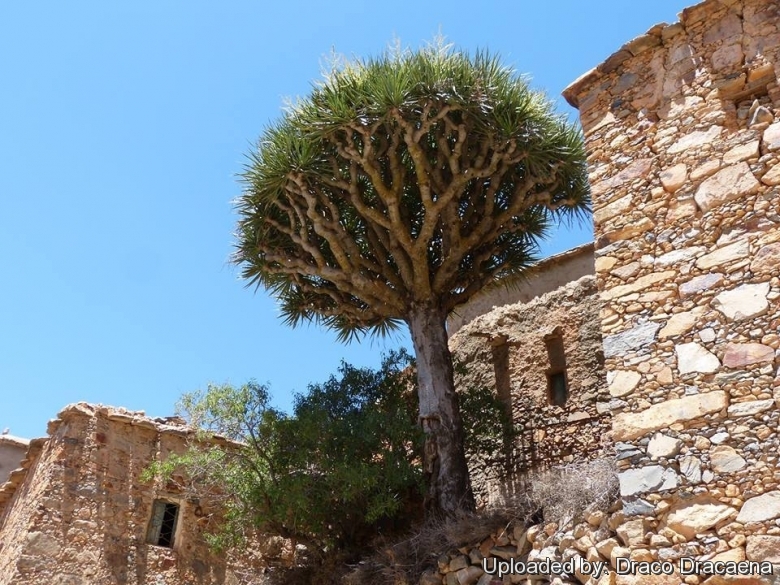
Dracaena draco subs. ajgal Photo by: Draco Dracaena
Origin and Habitat: Morocco. Western part of the Anti-Atlas mountains East of Tiznit.
Type locality: Jbel Imzi, prope Anezi in Anti-Atlantis, 450 metres above sea level.
Habitat: Grows on quartzite cliffs in gorges in dry mixed open woodland.
Brief history: The term “Dragon tree” is the common name given to certain trees or shrubby species of the genus Dracaena. The most famous of the “Dragon trees” is the Dracaena dracoSN|22863]]SN|22863]] that is the flagship species of the Canary, where it has almost disappeared natural environments. It is also present in Madeira and the Cape Verde Islands. It was long thought that it was endemic to Macaronesia (Canary islands archipelago), until the discovery in 1996 of a wild population in the western part of the Moroccan Anti-Atlas, near Tiznit, now considered subspecies Dracaena dracoSN|22863]]SN|22863]] subsp. ajgal. This species has an exceptional Longevity. There was in the garden of the maison Franchi in La Orotava in Tenerife a 5000 years old dragon tree which was destroyed by a hurricane in 1868. The age of this tree is today estimated at 600 years only. In 1996, a small wild population was rediscovered in the Moroccan High Atlas, near Agadir (Dracaena dracoSN|22863]]SN|22863]] subsp. ajgal). The plants grow on the mountainside, in the rocks, up to 1400 meters (Ajgal means "living in altitude," the "inaccessible" in Berber). This subspecies is similar to the standard canary Dracaena dracoSN|22863]]SN|22863]], but differs slightly in shape and colour.
Synonyms:
See all synonyms of Dracaena draco
back
Accepted name in llifle Database:Dracaena draco subs. ajgal Benabid & CuzinCompt. Rend. Acad. Sci. Paris, Ser. 3, Sci. VieAccepted name in llifle Database:Dracaena draco (L.) L.Syst. Nat., ed. 12. 12 2: 246 1767Synonymy: 20
back
Common Names include:
BERBER (Tamaziɣt , Tamazigh): Ajgal
Description: Dracaena dracoSN|22863]]SN|22863]] subs. ajgal differs from type for the smaller leaves and smaller flowers. For all other characteristics it is comparable to the type.
Leaves: 60 cm long, 3 cm wide.
Flowers: Pedicel 1-4 mm long, Perianth yellowish-white. Tube campanulate 1-2 mm long. Tepals 7-8 mm long. Anthers yellow.
Subspecies, varieties, forms and cultivars of plants belonging to the Dracaena draco group
 Dracaena draco (L.) L.: is a tree monocot with a large central trunk that with age may develop a hugely wide umbrella-like canopy. Distribution: Canary Islands, Cape Verde, Madeira and introduced to the Azores
Dracaena draco (L.) L.: is a tree monocot with a large central trunk that with age may develop a hugely wide umbrella-like canopy. Distribution: Canary Islands, Cape Verde, Madeira and introduced to the Azores Dracaena draco subs. ajgal Benabid & Cuzin: has smaller leaves and flowers. Distribution. Western part of the Anti-Atlas mountains of Morocco.
Dracaena draco subs. ajgal Benabid & Cuzin: has smaller leaves and flowers. Distribution. Western part of the Anti-Atlas mountains of Morocco.
Bibliography: Major references and further lectures
1) Draco Dracaena (Ajgal Discovery)on Facebook. <www.facebook.com/afrznae>
2) Chase, M.W.; Reveal, J.L. & Fay, M.F. (2009), "A subfamilial classification for the expanded asparagalean families Amaryllidaceae, Asparagaceae and Xanthorrhoeaceae" Botanical Journal of the Linnean Society 161 (2): 132–136.
3) Urs Eggli “Illustrated Handbook of Succulent Plants: Dicotyledons” Springer, 2002
4) Bañares, A. et al. (1998). "Dracaena draco" 2006. "IUCN Red List of Threatened Species." IUCN 2006.
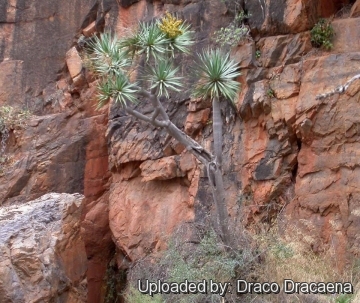 Dracaena draco subs. ajgal Photo by: Draco Dracaena
Dracaena draco subs. ajgal Photo by: Draco Dracaena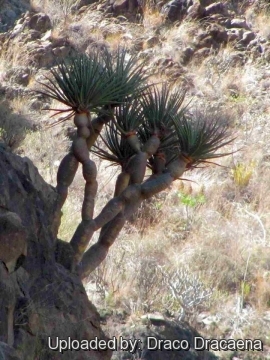 Dracaena draco subs. ajgal Photo by: Draco Dracaena
Dracaena draco subs. ajgal Photo by: Draco Dracaena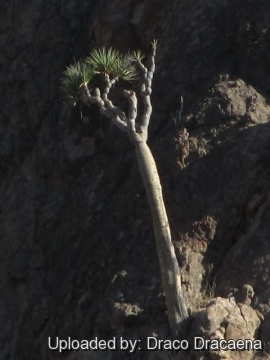 Dracaena draco subs. ajgal Photo by: Draco Dracaena
Dracaena draco subs. ajgal Photo by: Draco Dracaena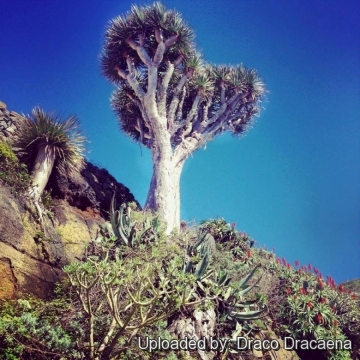 Dracaena draco subs. ajgal Photo by: Draco Dracaena
Dracaena draco subs. ajgal Photo by: Draco Dracaena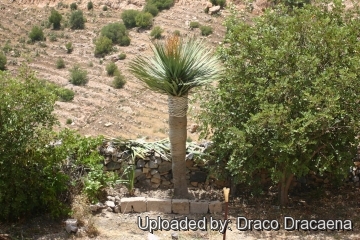 Dracaena draco subs. ajgal Photo by: Draco Dracaena
Dracaena draco subs. ajgal Photo by: Draco Dracaena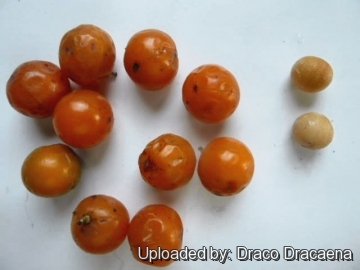 Fruits of the dragon. Remove the pulp before sowing. Photo by: Draco Dracaena
Fruits of the dragon. Remove the pulp before sowing. Photo by: Draco Dracaena Dracaena draco subs. ajgal Photo by: Draco Dracaena
Dracaena draco subs. ajgal Photo by: Draco Dracaena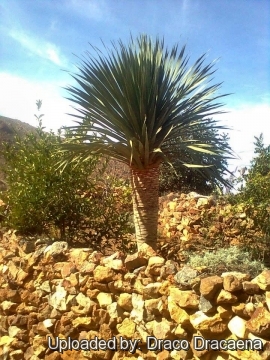 Dracaena draco subs. ajgal Photo by: Draco Dracaena
Dracaena draco subs. ajgal Photo by: Draco DracaenaCultivation and Propagation: Dracaena draco is very adaptable and widely available as an ornamental tree for parks, gardens. It will grow nearly anywhere in warm Mediterranean climates, but prefers hot, dry, nearly desert conditions. But young plant are happy growing indoors too.
Growth rate: It grows slowly, requiring about ten years to reach 1,2 metres in height but can grow much faster.
Soils: Need very well drained soils. Give the plant an airy growing medium consists of non organic material such us clay, pumice, lava grit, and peat or leaf-mould. It like quite small pots, repott in very later winter, early spring. It will be content in its position and with its soil for years.
Fertilizing: Apply general garden fertilizer (10-30-10) including all micro nutrients and trace elements or slow release fertilizer to the planting bed at 3-month intervals, and to container plants at monthly intervals.
Exposure: Requires sunny locations.
Watering: Water regularly during the active growing season from March to September. No water should ever be allowed to stand around the roots. Keep almost completely dry in winter.
Hardiness: Some cold tolerance. This plant has tolerated temperatures down to –5ºC for very short period. However it can be difficult to get it to look its best without a good amount of heat and sun and so it is only really suited to the tropics (USDA Zones 9-11). Keep the plant cooler in winter, but maintain the light as bright as you can so that any growth which it may produce at this time will not be etiolated. It can be grown outdoors in the summer months to benefit from direct exposure to light, and especially exposure to high summer temperatures.
Wing tolerance: Has a good wind tolerance. Only downside is from very strong winds, the plants may smash to to the ground... best to plant in such a location where winds are not a big issue.
Pest & diseses: Scale and mealybugs. Rot it is only a minor problem with Dracaena if the plants are watered and “aired” correctly. If they are not, fungicides won't help all that much. It is very unlikely to lose this plant from root rot from excessive water.
Pruning: Remove dead and damaged leaves only; old leaves fall naturally from the outer limits of the leaf cluster: they may be removed easily with a light tug. Drastic pruning usually disfigures the plant.
Transplant: It is easily transplanted.
Garden uses: Not surprisingly, the extraordinary appearance of this tree has ensured it a place in parks and large gardens wherever there is a suitable Mediterranean climate. It is also cultivated as specimen plant, and as large container plant with dramatic grey foliage. It is very drought resistant but susceptible to frost. It makes a good house plants for a Dracaena, though recommend higher light if possible. Due to its drought tolerance it is used in sustainable landscape projects in arid region.
Traditional uses: When the bark or leaves are cut they secrete a reddish resin, one of the sources of the substance known as dragon's blood, used to stain wood, such as of Stradivarius violins. Dragon's blood was widely known in ancient times used as a dye, but this probably came from Dracaena cinnabanni of Socotra, and from Somalia. Other plants produce resins also known as dragon's blood and Daemonorops draco a palm from Sumatra, is the main source of the dragon's blood varnish for violins. It also has a number of traditional medicinal uses.
Propagation: May be propagated either from seeds or by cuttings. It is easy to propagate by cuttings in late spring to summer, just take a cutting of the plant let it dry for 1 or 2 weeks and stuff it in the ground (preferably dry, loose, extremely well draining soil). Place the cutting in a warm, bright and slightly humid spot, to increase the building of new roots
Your Photos

by Draco Dracaena



















